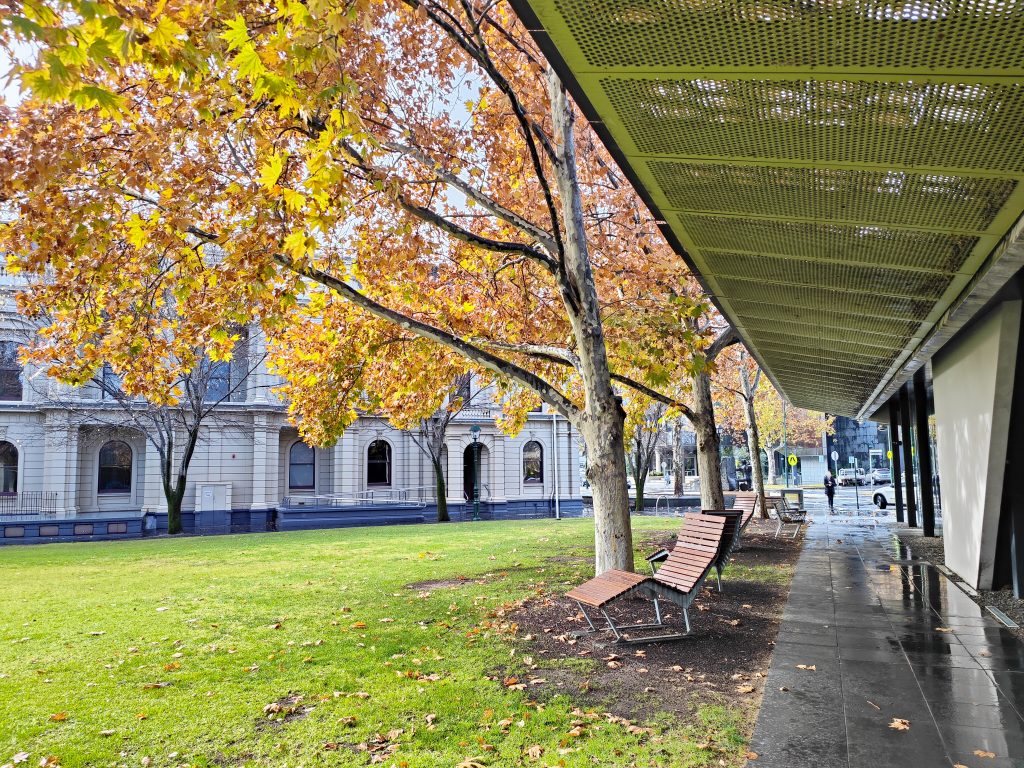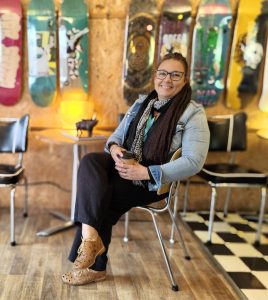Clare Woods has a passion for people… and data. It’s an unusual pairing, but it may just be a combination that will change lives forever as she drives forward an ambitious pilot program for Bendigo Community Health Services: the Inroads program.
Placing two Community Connectors on the streets of Bendigo’s CBD, the program is a trauma-informed, low-barrier model of care aimed at improving health care access for those at risk of, or experiencing, homelessness; an issue that has been at the forefront of Bendigo minds for a number of years now.
It’s opportunistic work and Clare can’t speak highly enough of the team she delivers the program with – Karl Quast and Rhiannon Engi. They are there not just for vulnerable individuals but for services around Bendigo who come into contact with them.
“The Inroads program is focused on building trust and working at an individual’s pace to reconnect with health and social services,” she says. “It’s about meeting people where they’re at.
“Our Community Connectors bridge the gap between a service’s policies and an individual’s day-by-day capacity. They also offer conversation, kindness and care when it’s needed most.
“The health systems in place now are too rigid, set up for the few not the many,” she tells. “If we were to set up systems around the most vulnerable in our community and build out from there all services would be much more inclusive and accessible for everyone.”
Homelessness in Bendigo
The 2021 Census found 571 people were experiencing homelessness in Greater Bendigo: a 94 per cent increase since 2016 and four times the state average.
Challenges for those sleeping rough include gaps in service coordination, limited mental health response outreach, lack of access to time-critical health care, restricted access to basic amenities, a reliance on enforcement over support, and stigma and social disconnection.

Inroads quietly launched earlier this year with most accessing the service through the Bendigo Library, where Community Connector Karl is based and had already begun to establish bonds with community members and staff. The program is slowly building and now has access to a nurse practitioner and GP to deliver primary health care when its needed.
“My catch phrase at the moment is ‘gain and maintain access to health’,” Clare smiles.
“For the community we support food and shelter are their main priorities, so health drops off. When you haven’t had the privilege of a safe place to call home you are forced to feel your feelings in public which makes it hard to meet society’s expectations around behaviour. Or, just simple things like being contactable is hard. So we become the point of contact for all the services engaged with a person.
“Our Community Connectors recognise that a person may have trauma just below the surface, they also may have already been let down by the system. To support access Karl and Rhiannon work closely and respectfully with services to help shift the lens: encouraging providers to see things from that person’s perspective, to understand the context of their life, and to support access to the health care or social services that they need.”
Reconnection is key


Currently, the team is supporting 37 individuals and Clare is proud to report that they have an 80 per cent success rate of program participants attending appointments. This is no small feat given the day-to-day challenges an individual seeking support may be facing.
“The program’s model of care is already showing strong results,” Clare tells. “State and local government services, NGOs and health services are all reporting improved engagement with their clients that are being supported by our team.
“We do support our clients by going to appointments with them if asked and they have consistently described the profound value of having someone in the room they trust during their most vulnerable moments.”
Stigma surrounding homelessness is ever present and something that Clare, Karl and Rhiannon are actively working to dispel.
“We’re developing person profiles,” Clare explains. “The idea is for both a clinician and an individual to fill one out and then read the others’ profile before an appointment.
“The aim is to create a more balanced dynamic — so both parties enter the room knowing something about each other. It also gives the individual the chance to share important information they might not feel comfortable saying out loud – like personal triggers or strategies that help them manage anxiety – you know lighter, icebreaker-style details like ‘I’m a Collingwood supporter’ or ‘I love playing backgammon’.”
Reconnection is a key theme that Clare touches on when she talks about the work the Inroads program is doing.
“When you have a group of people that are constantly stigmatised, that are treated unfairly, what happens is disconnection,” she explains. “They disconnect from the world around them and the result is them having little reason or care for societal norms or what happens.
“There’s an assumption that people experiencing homelessness are to be feared; equating homelessness with criminality. But context is important. The majority of people experiencing homelessness either come from low socioeconomic families or communities, were born with a cognitive or psychosocial disability, have trauma, experience episodic mental or all the above.
“The premise of the Community Connectors is relationship building, right, but we don’t want it to stop at Karl and Rhiannon. What we need is reconnection; to make people feel welcome in our community.”
How can we do that?
“Patience and the ability to let go of what you think should happen,” Clare immediately responds. “Collaboration, empathy, open minds… thinking outside of the status quo.
“We know what the biggest problem is… the system is broken, and what the data from our program shows is that we have a program that is enabling health and social service access in a safe, supportive way. Our program would really like to facilitate engagement for more individuals and the only thing slowing us down is funding.”
Investment is crucial to Inroads’ survival
Current funding has come from a number of sources including BCHS, the City of Greater Bendigo, Goldfields Library and the Murray Primary Health Network. It is short-term though, and Clare says they only have enough to run the program until the end of the year. Where funding will come from next is anyone’s guess. The idea of no more funding is not something Clare is willing to contemplate though.
“I will write funding submission after funding submission,” she declares.
“I will do anything. I really believe in this program. I really believe in the model of care that we’ve developed. Rarely does a program support collaboration between so many different services and rarely is it so effective.”
Clare is busy collecting as much data as possible to prove the program’s tangible impact and to ensure it will be sustained past its pilot status. It’s a task that sounds simple enough, but as she explains they’re stuck between a rock and a hard place.
“Data really does tell a story and I love that,” she says.
“We really want to build a good body of work to evidence what we’ve accomplished so far. I’ve drafted a journey mapping project plan to evidence the program’s impact from the perspective of the individual, Community Connector and all the service providers.
“The journey mapping will follow an individual through multiple supported interactions and appointments to track the impact the support has on the individual, service provider and Community Connector’s experience. This will help show the amount of actual support needed for an individual in our program to not only gain but maintain engagement – with and without support.
“We are essentially trying to understand and evidence the extent of support required for the people we support to be able to access basic services.
“But there’s a catch-22: evidence would help us secure the funding our program needs; however, we need funding to get this type of data properly.”
by Emma Sartori
July 9, 2025
*Please note: This article has been updated to reflect a name change to the program. The Inroads program was formerly known as the Health Access Program (HAP). July 30, 2025.
